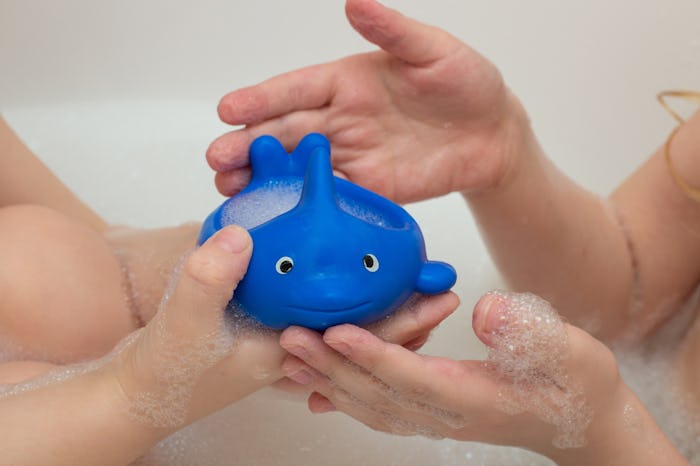Life

Here's When To Replace Bath Toys
If you're like me, your brain makes fairly simple correlations. For me, if soap and water are present, then things are clean and sanitary. But that's not necessarily the case when it comes to your kids' favorite bath time toys. I naively assumed that, since my son's rubber dinosaurs and squirting starfish were being used in warm, soapy water, they'd be just as clean as he was after his bath. But, as it turns out, there are some hard and fast rules about when to replace bath toys, as well as health and safety guidelines involved in keeping your children's aquatic characters in shipshape condition.
Unfortunately, that's not the case — not even a little bit. As pediatric specialist Dr. Saul Hymes told NBC News, "any hollow toy that is rubber or plastic is receptive to mold growth." No matter how diligent you may be when it comes to keeping things tidy, moisture and residue from the bath create a recipe for funky filth. But, it does seem that there is one exception to the rule. Bath toys that are completely solid — no holes at all — can pretty much be cleaned like any other surface and you'll only need to throw them out once they're damaged beyond repair. In an interview with Parents, microbiologist Dr. Phillip Tierno said, "toys that don't trap water are safe as long as they dry out between uses — bacteria can't live on dry material." So you're in the clear if your child's bath buddies aren't hollow.
So if you're wondering what to do with a tub full of squirting, squeaky, or porous playthings, the solution is simple. According to Health Guidance, you should, "throw out bath toys which have holes in them." This may seem harsh, but as Hymes previously stated, if water can get inside the toy, there will always be an opportunity for mold growth. Rather than speculating if there is gross bacteria lurking in your children's tub toys, switch to a nonporous option and worry no more.